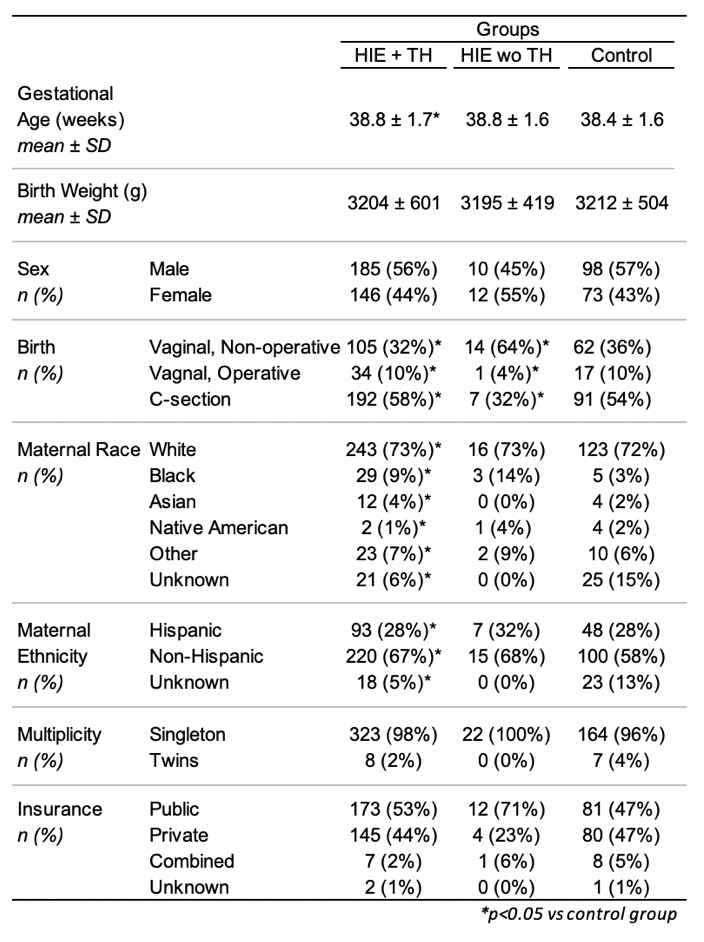Neonatology
Session: Neonatal Neurology 2: Clinical
18 - Bilirubin in Infants Decreases with Increasing Severity of Hypoxic Ischemic Encephalopathy
Friday, May 3, 2024
5:15 PM - 7:15 PM ET
Poster Number: 18
Publication Number: 18.566
Publication Number: 18.566

Harisa Spahic, MD (she/her/hers)
Pediatrics Resident
Children's Hospital Colorado
Aurora, Colorado, United States
Presenting Author(s)
Background: In neonates, elevated total bilirubin (TB) levels can result in brain damage, such as kernicterus. Interestingly, small cohort studies suggest that infants with hypoxic ischemic encephalopathy (HIE) have lower TB values than controls. Limited literature exists on further relationships between HIE severity and therapeutic hypothermia (TH) with TB values in a larger population.
Objective: -Determine whether HIE severity and treatment with TH results in lower TB
-Establish whether differences in TB levels are associated with morbidity and mortality outcomes
Design/Methods: This retrospective cohort study was conducted at Children’s Hospital Colorado (CHCO). The study was granted exemption by the University of Colorado/CHCO COIRB. Three groups were studied: (1) infants with HIE receiving therapeutic hypothermia (TH), (2) infants with HIE but not receiving TH, and (3) children admitted to the NICU for a non-HIE neurological diagnosis. A subgroup analysis between groups 1 and 2 was conducted to evaluate severity of HIE (mild, moderate, or severe) and treatment on TB levels. Data was obtained from Children’s Hospitals Neonatal Database (CHND) and chart review of the CHCO’s electronic medical record. Data collected included patient diagnosis, TB values, patient demographics, length of stay (LOS), and mortality. Analysis included student t-test, 𝜒2 test, ANOVA, and regression.
Results: A total of 524 infants were identified in the CHND from January 2010 to September 2023. A demographic chart is included. Peak and 24 hour TB (mean±SD; TBmax and TB24h, respectively) values were found to be statistically different between the three groups (group 1: n=331, TBmax=7.35±4.0 mg/dL and TB24h=4.57±1.8 mg/dL; group 2: n=22, TBmax=6.95±3.2 mg/dL and TB24h=5.36±2.1 mg/dL; group 3: n=171, TBmax=9.70±3.8 mg/dL and TB24h=6.39±2.0 mg/dL, p< 0.001). Within group 1, TB values were statistically different between HIE severity (mild: n=93, TBmax=8.38±4.5 mg/dL and TB24h=4.82±1.7 mg/dL; moderate: n=164, TBmax=7.70±3.9 mg/dL and TB24h=4.79±1.9 mg/dL; severe: n=74, TBmax=5.28±2.5 mg/dL and TB24h=3.79±1.4 mg/dL, p< 0.001). In group 2, no significant differences were found when stratified by HIE severity. Further, no significant disparities were observed when comparing TB values for infants with mild HIE between Groups 1 and 2 nor between moderate and severe HIE. TB values did not exhibit statistically significant associations with infant mortality or LOS.
Conclusion(s): Infants with increased severity of HIE and/or less treatment have lower bilirubin values. Lower TB values may be a clinical biomarker in evaluating the patient’s care.

